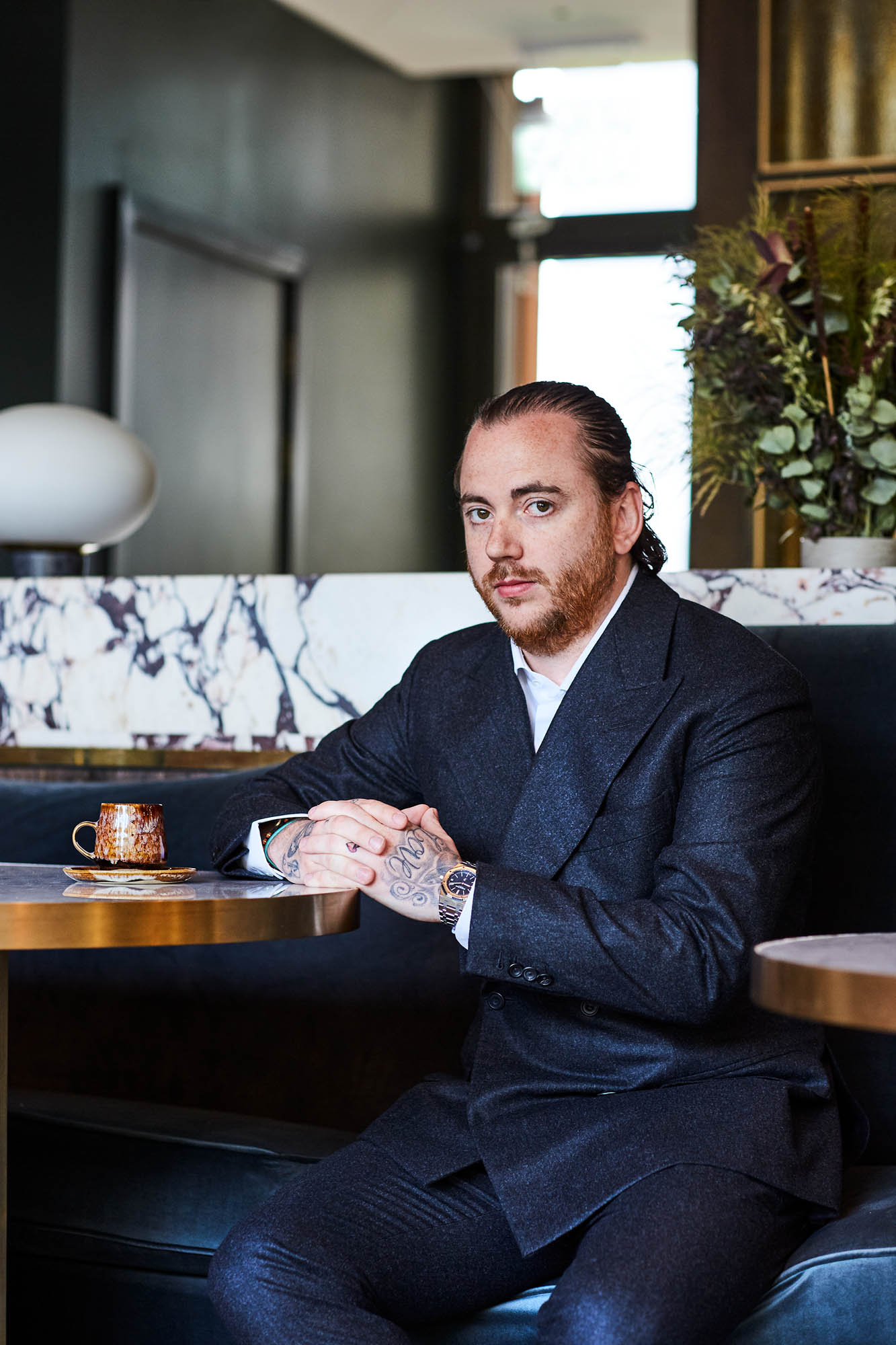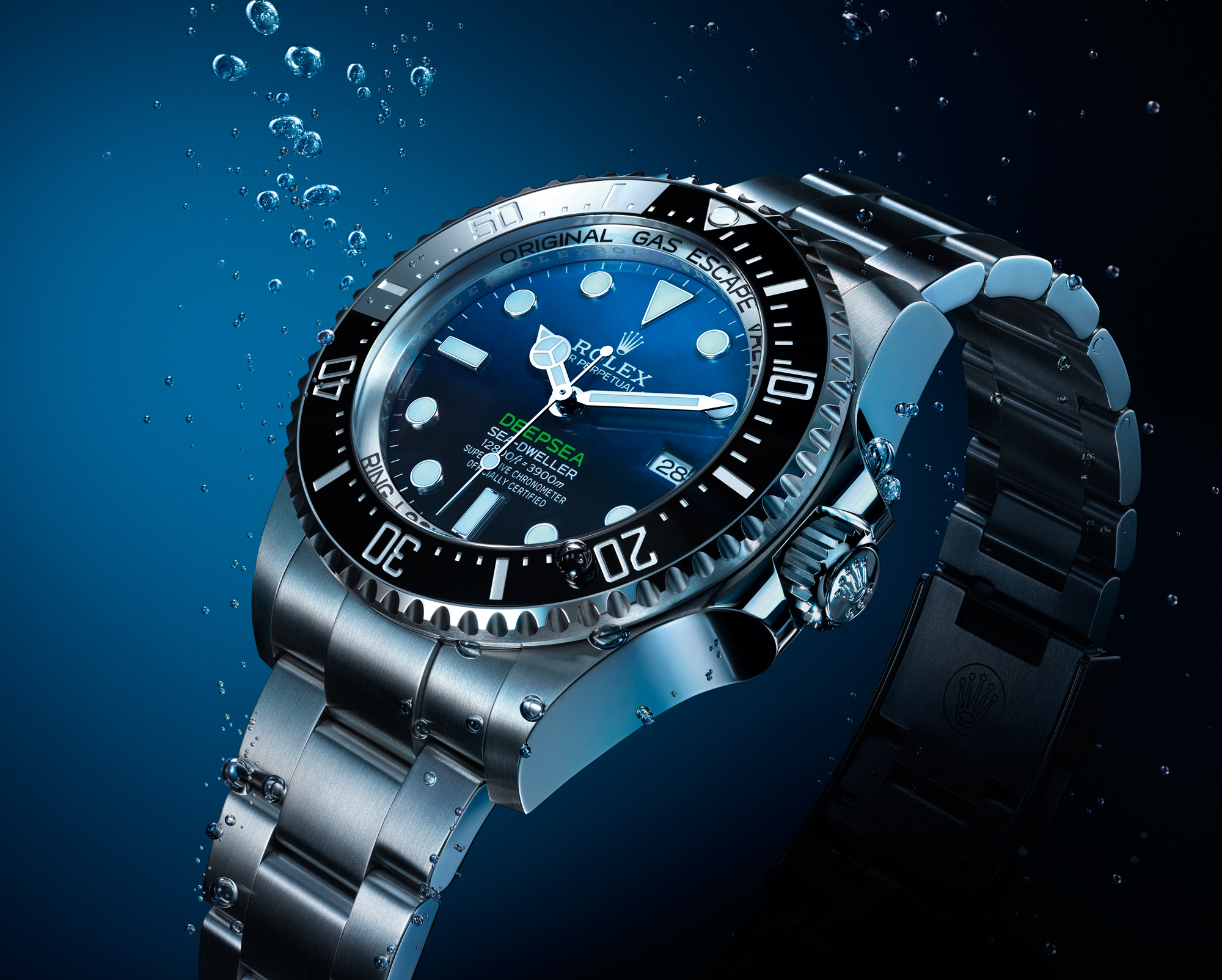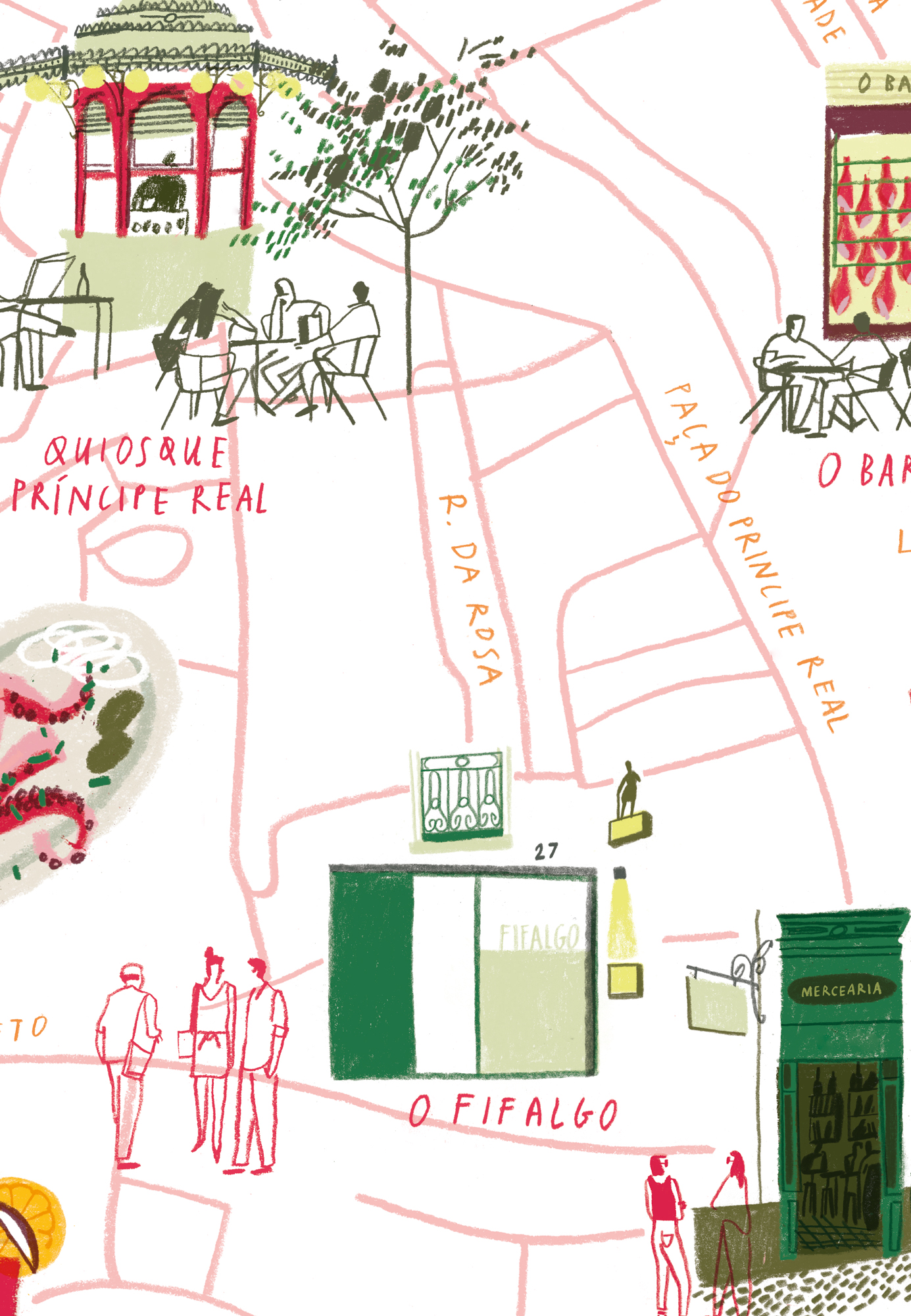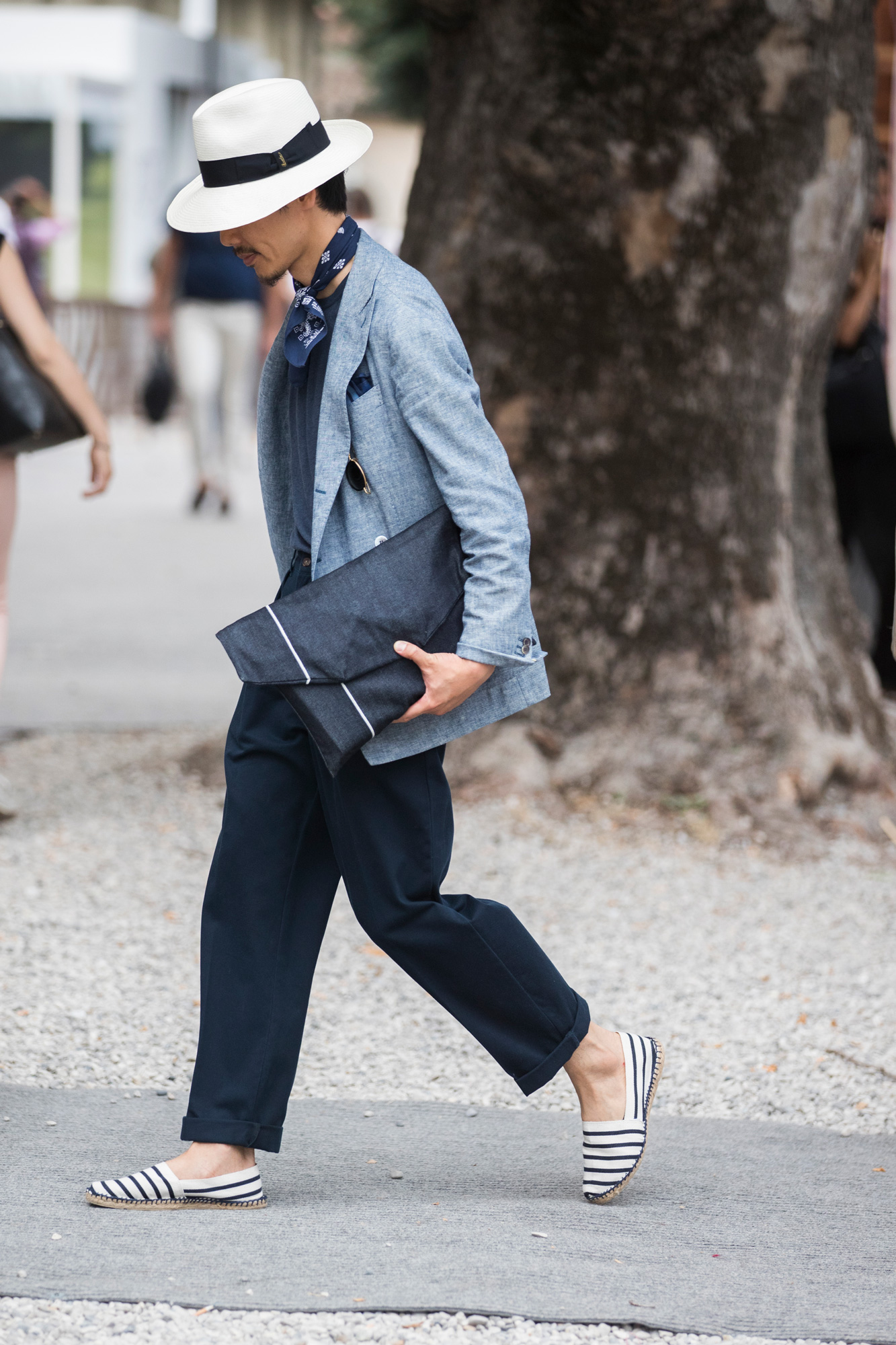There’s a new look to the English Cut team, but an air of familiarity. That’s because newly recruited cutter Edwin Deboise first crossed paths with tailor Paul “Griff” Griffiths nearly 30 years ago, when the latter was an apprentice at Savile Row’s Anderson & Sheppard.
Deboise joined Anderson’s to replace the sick Dennis Halbury, who eventually returned; it was then that Tom Mahon, Deboise’s predecessor at English Cut, joined Anderson’s as an undercutter to “Mr Holbury” before he finally retired. There’s a sort of symmetry in the fact that Edwin has now replaced Tom, if hardly a coincidence.
“It was really a perfect fit,” says Edwin, who had the further selling point of already residing in Cumbria, where English Cut’s workshop is located, operating his own firm, Steed, from a shop in Carlisle; indeed, he was instrumental in convincing the cockney Griff to up sticks from his native London in the first place. “Edwin’s ideal because he does the Anderson’s style, and I worked with him for all that time,” echoes Griff.
The Steed team has since been absorbed into English Cut’s and rehomed in the latter’s facilities. Having as much as possible under one roof provides more control over the production than relying on subcontractors, who may be working from home for several firms at once and beholden to none. This way, the English Cut team – or at least Edwin’s son Matthew, another new recruit and tasked among other things with overseeing production – can ensure that things get done for their customers on time. “We’ve got more apprentices now than we’ve ever had,” adds Griff.
Karl Matthews, English Cut’s front-of-house/stylist for a year and a half now, also worked alongside Griff at Anderson’s, although after Edwin’s stint. Unsurprisingly, get round a table with them, and the anecdotes about the storied firm will soon follow. Like the time that “one of the Irish kids” found Griff’s BB gun and alarmed passers-by by holding it at an upstairs window while simultaneously smoking a cigarette. “Next minute, the Old Bill were over, and they took us downstairs,” recalls Griff.
Or the time when, from a similarly lofty vantage point, Griff and Matthews sniped a certain Britpop idol from across the street with a state-of-the-art, fully pumped Super Soaker, purchased from Hamleys around the corner, before ducking down as the victim looked around furiously. “It was such a good shot though,” says Karl. “We hit him right in the head.” Griff, for his part, shows some remorse: “I wish it had been his brother.”
“A lot of the Row are starting to mould into a more modern way. But I think we’re going to be one of the first to really bring it to the forefront and make younger people, and even older ones, more relaxed”
Some of the anecdotes are, however, apocryphal. Like the late designer Alexander McQueen, who trained at Anderson’s, supposedly leaving a rude message in the lining of Prince Charles’ jacket. Griff can categorically disprove that, having been asked two decades ago to change the lining and return the old one: “There was nothing in there.”
Karl, who studied fashion at college in Doncaster (“the well-renowned Doncaster College”), was inspired by McQueen to apply to the Row and choose Anderson’s over Kilgour. Karl and Griff are at pains to point out that they did do some tailoring between the antics, and did it well: they recall being told by a disgruntled cutter that they’d lost a customer because they’d taken too long, only for said customer to come back a week later and order “40 or 50” suits. But even in the confines of the infamously strict firm, the pair had a laugh, whether at the pub or playing golf games on a PlayStation in the workshop.
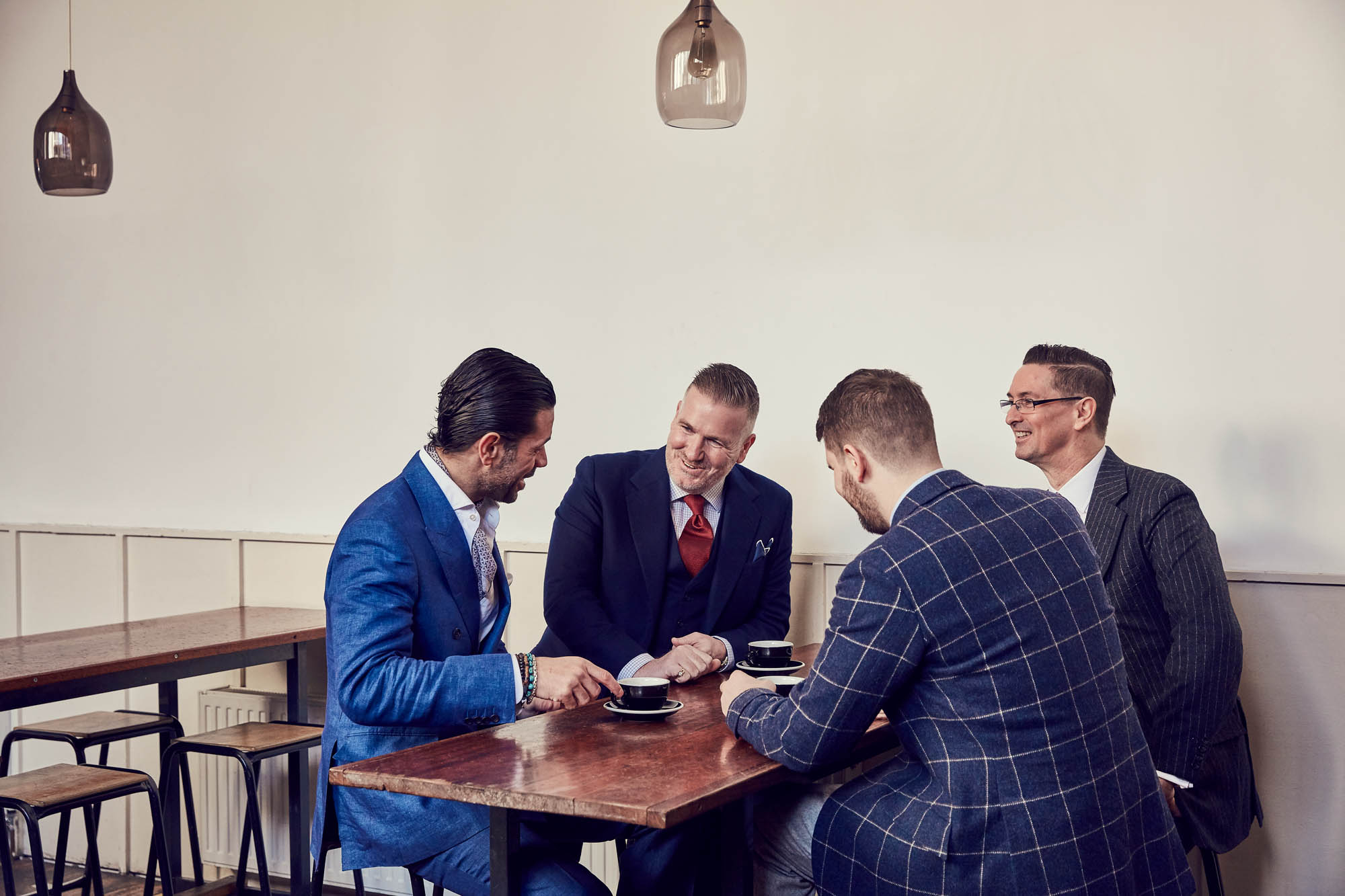
“Wouldn’t have happened in my day, let me tell you,” says Edwin, only half-jokingly, describing the environs of Anderson’s as positively “Victorian”. “Everybody was ‘Mr Griffiths’, except the directors, who called each other by their first names,” he says. “It was quite intimidating for people to actually walk in. If you were a regular customer, it wouldn’t be so bad, but to someone who was thinking about bespoke for the first time, it looked daunting.”
“I always remember that when I first walked in, everything was very quiet, very serious,” says Karl. “But then you went out the back, and everyone was talking about football.” He has experience of both, having started out “making the tea” before a vacancy in the cutting room opened up. After a few years, a slight difference of opinion and a discussion about his strengths (“I really love style, putting things together and the creative side of things”), he moved from back of house to front, which was an adjustment.
“When I first started there, I always used to think, ‘What the hell do you talk to these people about?’ There are celebrities, royalty. I’m just this little kid from Yorkshire,” he continues. “But then you realise that they’re there to talk about what you do well. When I got into that mentality, it was a breeze and I came into my own; I fell into my groove.”
The skills that Karl learned there serve him well in his multi-hyphenate role at English Cut, where his main task is to preserve the best traditions of Savile Row, while removing stuffiness like an old lining. “Like I said before, you go to the back of house and everyone’s having a laugh – everything’s cool, it’s normal,” he says. “It’s a case of bringing that into the front.” Especially as the customer is apt to be younger, new to bespoke or both, and needs to be made to feel comfortable in unfamiliar territory. “I think the shop in Chiltern Street is lovely as well,” adds Edwin. “It’s very inviting.”
“It’s getting away from that whole Victorian-style era,” says Matthew. “A lot of the Row are starting to mould into a more modern way. But I think we’re going to be one of the first to really bring it to the forefront and make younger people, and even older ones, more relaxed.” In the old days, tailors didn’t even used to advertise their wares in the window, making it harder still to shop; instead they’d display a bit of cloth or, even less helpfully, some sheepskin slippers. Tommy Nutter, where Edwin worked under legendary cutter Edward Sexton, was the first to install a jacketed mannequin. Crazy.
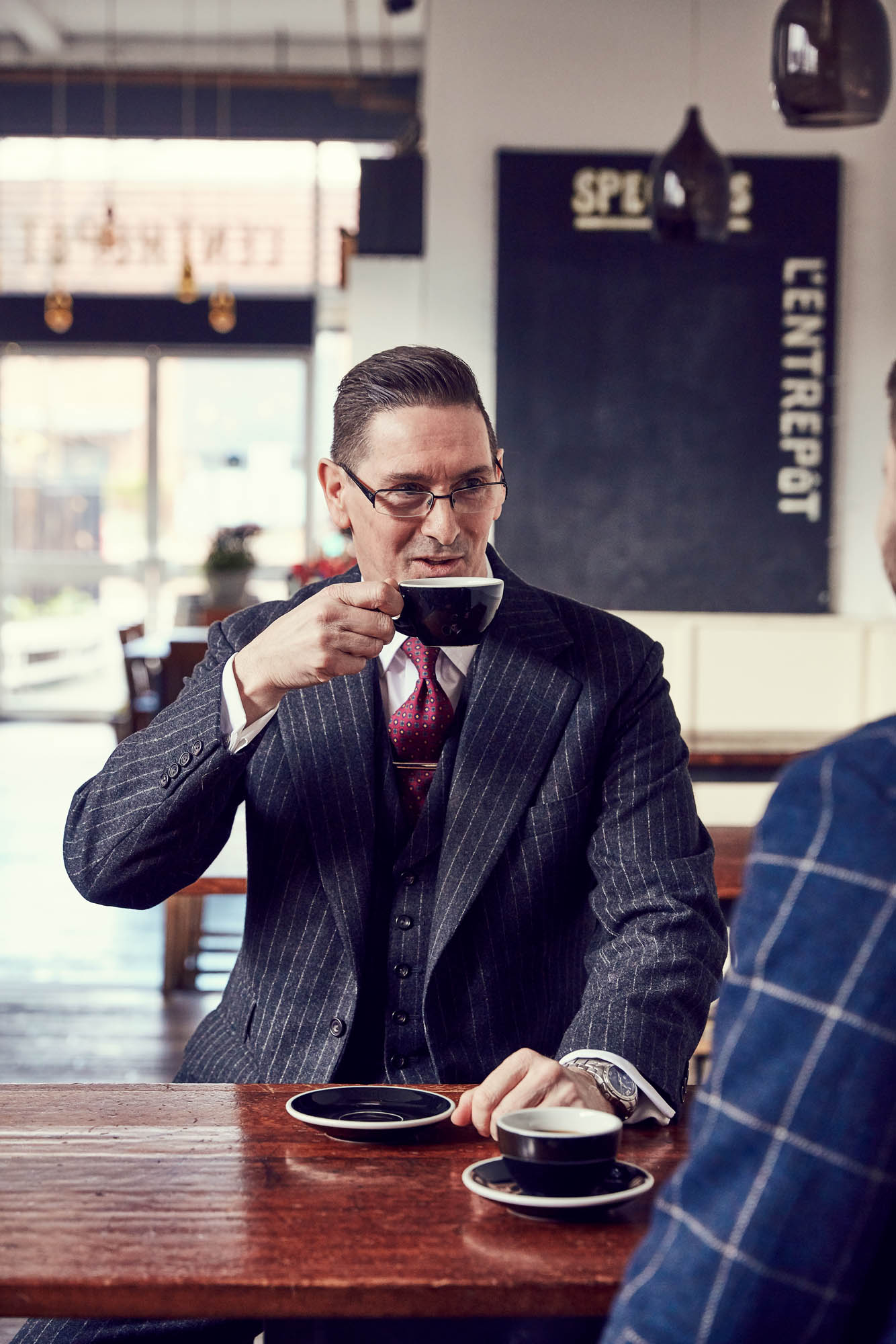

Matthew is also a dab hand at talking to customers, about football – the gridiron variety, which comes in handy on Stateside trips. “He’s very keen on his American sports, so he’s good at interacting,” says Edwin. “Not very good at them,” says Griff, who gleefully brings up one particular trip where he “thrashed” Matthew at one of those fairground-style basketball machines. Protesting that it was “not proper basketball”, Matthew insisted on a rematch on an actual court a couple of days later, which Griff also won –- despite not having any gear and having to buy some specially for the occasion.
“He didn’t beat me at one-on-one, he beat me at free throws,” clarifies Matthew, whose first experience of working in tailoring came at age 12, helping Edwin out on Saturdays by licking envelopes for paper itineraries. Edwin started even earlier, assisting in his tailor father’s workshop from 10 before training at London College of Fashion and going on to dress icons such as Franco Moschino, Nicola Bulgari and Manolo Blahnik. After Matthew left school meanwhile, he was employed by the bookmaker Ladbrokes, which was lining him up to compile odds for the US markets. But as Edwin got busier, he started pitching in more and more, until he got to the point where he decided to double down on Steed.
Although Matthew can cut “a little bit”, and measure customers up for new orders, he left the shears to Edwin and took the business operations firmly in hand, along with the phone, email and social media. “We were one of the first to start doing Twitter on Savile Row,” he says. Off the back of their online presence, they’ve been recognised while waiting for an Uber outside the airport in Houston and, in Matthew’s case, while waiting for a cheeseburger in a McDonald’s in New York on a fully booked day of appointments. “This young kid – probably about 19 – said, ‘Oh my God, I know you, you’re Matthew Deboise,’” he recollects. “The restaurant was packed, and he said it so loud, I felt myself go red.”
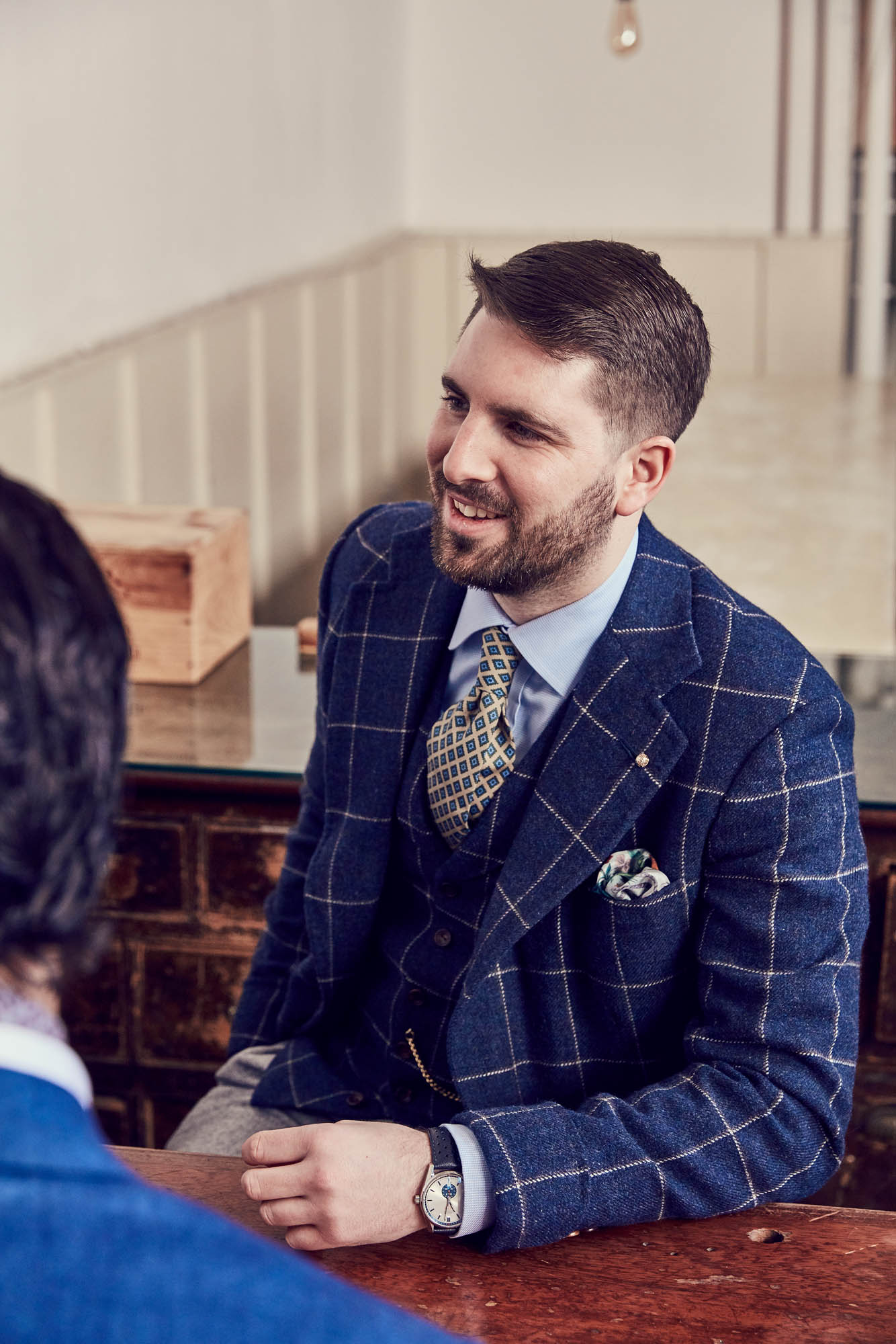
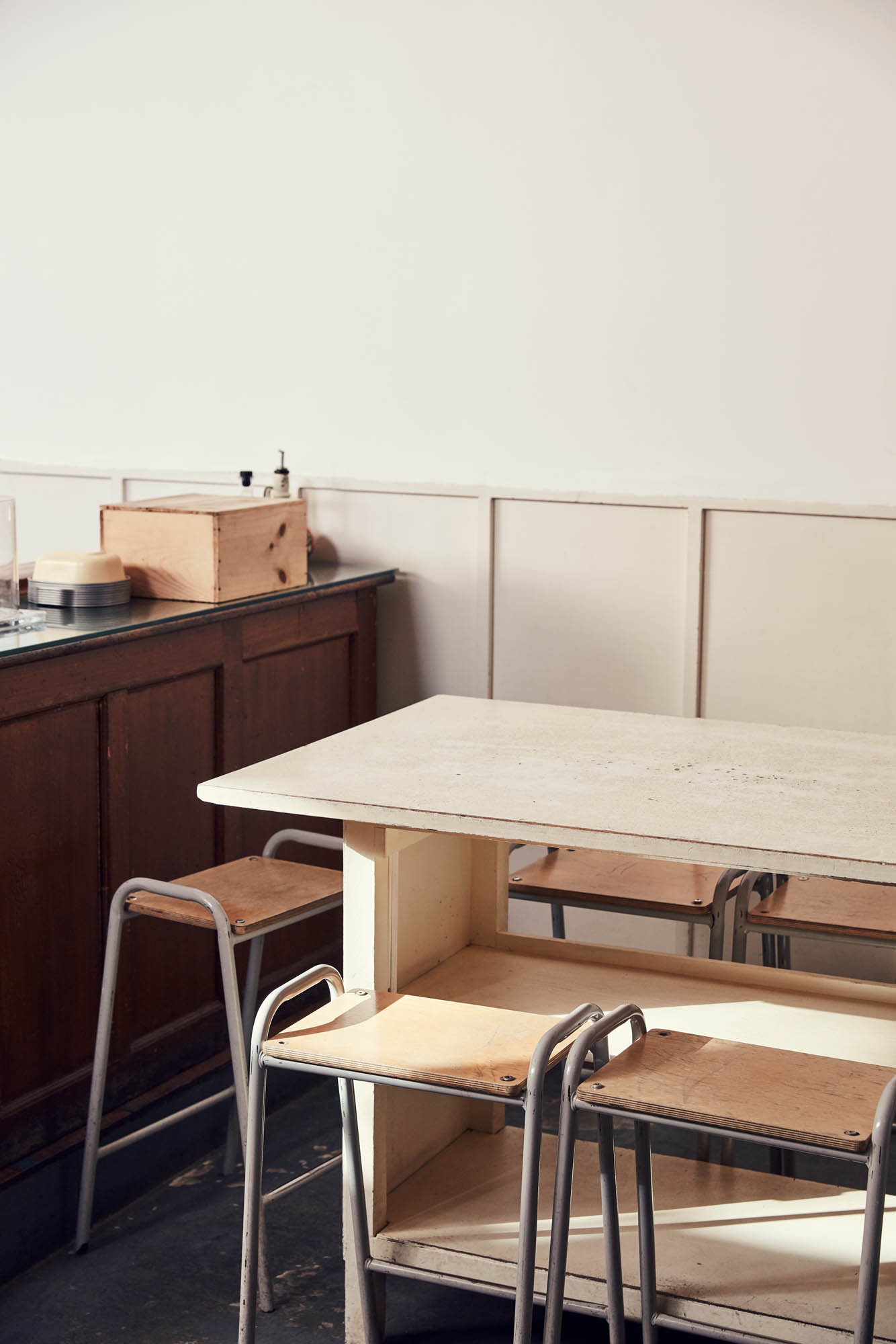
“Life is so much better if you focus on what you’re good at. Collectively, we all bring something to the table”
So while their respective skills and experience overlap somewhat, the English Cut team aren’t treading on each other’s toes as they find their places in the formative setup. Rather, the deep knowledge that Karl and Matthew have of what Griff and Edwin do informs their other capacities and the customers that they interact with: they’re better able to explain the ins and outs of a process that can be opaque to the uninitiated, plus manage production and expectations. “Life is so much better if you focus on what you’re good at,” says Karl. “Collectively, we all bring something to the table.”
With the band back together, metaphorically speaking, and jamming harmoniously, all that remains is to determine who is the lead singer: a question that provokes much mirth among the quartet. Not least because one of their number performed with the Three Degrees at the Starlight Rooms, a cabaret venue built into the corner of the now defunct Enfield FC’s Southbury Road ground that over the years played host to luminaries such as Tom Jones, Bob Monkhouse and – drum roll, please – Edwin Deboise.
“I think it was my mum’s 50th or 60th,” recounts Edwin. “They had this singing competition and got three people out of the audience. It was down to the crowd’s reaction who won. There was these other two girls, and I thought to myself, ‘Bugger this, I’m going to go for it.’ It was Gloria Estefan’s song Conga, and I sort of half did it with an Elvis touch.” He mimes the guitar player being taken aback, more by the unexpected nature of his crooning than the quality: “But I’m not kidding you, the buzz I got … When I started to sing, everyone went, ‘Woah!’” “Towards the exit?” quips Karl.
Sadly, or perhaps mercifully, it was a simpler time before camera phones, and no video evidence of Edwin’s star turn exists. But he assures the assembled that the reaction of the crowd, if not the band, was overwhelmingly positive. “Later on there was a DJ, we were dancing and all these people kept coming up to me.” Such is his nostalgia, you might almost think that he went into the wrong business – if he didn’t look so well suited.
